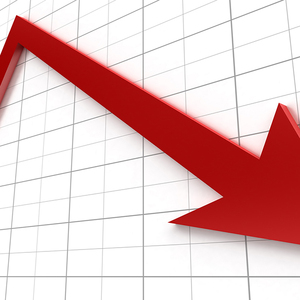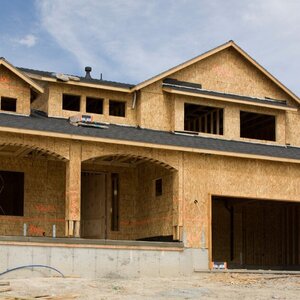The WPJ
THE WORLD PROPERTY JOURNALReal Estate Facts Not Fiction
New York City Multi-Family Properties Continue to Show Signs of Strength Despite the Credit Crisis
| By Robert Knakal | October 22, 2008 11:36 AM ET
A downside to multi-family properties is that they are extremely management intensive and only knowledgeable and hard working operators are able to truly maximize the potential that these buildings have. Rent regulation is a highly complex and continually changing set of rules by which these buildings must be operated. This complexity creates a significant barrier to entry for new buyers and is the main reason why we see such little direct investment from foreign buyers in this market segment. There has only been one major foreign acquisition that I can think of in the past several years and it appears that transaction is headed for bankruptcy. Not surprisingly, much of the foreign capital that is deployed into the multi-family sector is in the form of equity financing for local operators. While this barrier to entry might intuitively indicate that with less buyers, yields should be high, this is not the case. There are many operators in New York City that understand rent regulation and are able to maximize the performance of their properties through active hands-on management.
Notwithstanding the current credit crisis, the value of apartment buildings in the first half of 2008 versus the first half of 2007 (which will be viewed as the top of the bell curve for the last cycle) shows that prices were down, on average, only 5%. Since July 1st of this year, prices may have gotten softer by another 5% but, notwithstanding this additional drop, we are still within 10% of the top of the market. It is easy to conclude that this segment of the market has performed much better than others. The average capitalization rate for multi-family properties has inched up from an average of 5.5% in the first half of 2007 to 5.8% today, still well below the cost of debt. At our regular Monday morning sales meeting, I asked our brokers if they had any multi-family transactions at a capitalization rate of 6% or better. There was only one hand raised and that was due to the fact that the building consisted of nearly 100% free market apartments. This is indicative of the sector's strength.
Portfolio lenders have also been a main contributor to the health of this sector. Multi-family not only is the most highly sought after product type by investors, but is the most highly sought after asset class for portfolio lenders. Loan to value ratios have certainly slipped from 75-85% in the first half of 2007 to 60-65% today. Clearly, there is substantial equity that is required to purchase multi-family buildings but the rates on 5-year fixed money today fluctuate in the mid-6s which is relatively low by historical standards. We have also seen a shift from the very common utilization of gross rent multiples to more of a focus on capitalization rates. The spike in oil prices earlier this year impacted multi-family properties by almost a full multiple. Increased cost of operations have also led investors to look more closely at cash flow and capitalization rate as opposed to gross rent multiple.
Perhaps the biggest trend change that we have seen in this market segment is the shift away from aggregating multi-family properties into portfolios which, up until about a year and a half ago, was the way to attract institutional capital because the bigger the transaction was, the better. Today the sum of the parts exceeds the value of the whole. Many portfolios that are being offered to the marketplace are now being broken up with properties being sold individually. This is a 180 degree change from the height of this cycle. The individual property sales also require less aggregate dollars making them within reach of a larger pool of investors. We believe that we will see a constant (albeit low) flow of product into the market as the de-leveraging effect of the credit crisis takes hold. We are seeing some larger properties that were over leveraged come to market in the form of note sales or direct sales from lenders who have taken properties back. Due to the reduction in loan to value ratios, it may become difficult for some owners to refinance an existing loan without injecting additional capital into the property. If this additional capital is not available to them and they choose not to bring in a preferred equity partner, a sale of the property may be their only alternative. We believe this de-leveraging process will take place over a period of years as loans mature and interest reserves burn off.
Perhaps the biggest question on the minds of owners of multi-family buildings today is what will happen legislatively if the majority in the New York Senate shifts from Republican to Democrat? What will be the fate of The Rent Guidelines Board? What will happen to the $2,000 luxury decontrol threshold? These are questions that will only be answered in time and investors who remain the most bullish continue to aggressively seek opportunities in this market segment. A confluence of factors have kept the multi-family building sector in New York City resilient as long time owners continue to grow their portfolios.
Sign Up Free | The WPJ Weekly Newsletter
Relevant real estate news.
Actionable market intelligence.
Right to your inbox every week.
Real Estate Listings Showcase
Related News Stories
Real Estate Headlines
- Investment in Asia Pacific Multifamily Properties to Double by 2030
- Orlando's Housing Market Continues to Slow Down This Fall
- U.S. Mortgage Originations Predicted to Hit $1.95 Trillion in 2024
- Construction Input Costs in America Uptick in September
- Introducing Homebourse - The First Digital Real Estate Marketplace for Online Property Acquisition
- Global Home Price Growth Further Slows in Mid-2023
- Home Values in U.S. Begin to Slip Late Summer
- Foreclosure Filings in U.S. Spike 34 Percent Annually in Q3
- U.S. Mortgage Credit Availability Upticks in September
- Retail Market is a Bright Spot for Manhattan Real Estate
- Residential Rents in U.S. Dip in September Amid Growing Apartment Supply
- Asia Pacific Hotel Revenues to Rise in 2024 Despite Economic Volatility
- Multi-story Warehouses Are 15 Percent of Sydney's New Industrial Stock
- Manhattan Office Leasing Activity Lags in Q3 as Sentiment Remains Cautious
- U.S. Mortgage Rates Continue to Surge in October
- Tourist Bookings to Hawaii Down 50 Percent Since Maui Wildfires
- Greater Las Vegas Home Sales Down 10 Percent Annually in September
- Most U.S. Homebuyers Say Buying a Home is More Stressful Than Dating in 2023
- Mortgage Applications Dive 6 Percent Last Week in America
- Despite Peak Interest Rates, Global Housing Markets Improved in Q2
- U.S. Architecture Billings Index Reports Softening Business Conditions in August
- U.S. Home Price Growth Pace Upticks Again in August
- Nonresidential Construction Spending Increases in America
- Measurabl Appoints MetaProp Partner as Chief Growth Officer to Drive Globalization of its Market-Leading ESG Data Platform
- 10,000 Residential Properties Have Negative Equity in Hong Kong
- U.S. Pending Home Sales Dropped 7.1 Percent in August
- U.S. Mortgage Rates Reach Highest Level in 23 Years
- Office Conversions on Pace to Double in U.S.
- American Bankers See Weakening Credit Conditions Through End of 2024
- Hong Kong Office Vacancy Rates Stabilize After 4 Months of Increases
- Palm Beach Area Residential Sales Uptick in August
- Driven by High Mortgage Rates, Pending Home Sales Drop 13% Annually in September
- Miami Area Residential Sales Slip 13 Percent Annually in August
- U.S. Home Sales Dip 15 Percent Annually in August
- Home Flipping Transactions Down in 2023, Profits Up
- North Shore Systems Launches their iOS App, North Shore Mobile, in the Apple App Store
- U.S. Listings Inventory Rises 4 Percent in August
- The Fed Leaves Rates Alone for Now in September
- Blue Roc Premier Properties Earns CEO of the Year Award
- Commercial Mortgage Debt Outstanding in U.S. Jumps to $4.60 Trillion in Mid 2023
Reader Poll
Marketplace Links
This website uses cookies to improve user experience. By using our website you consent in accordance with our Cookie Policy. Read More





